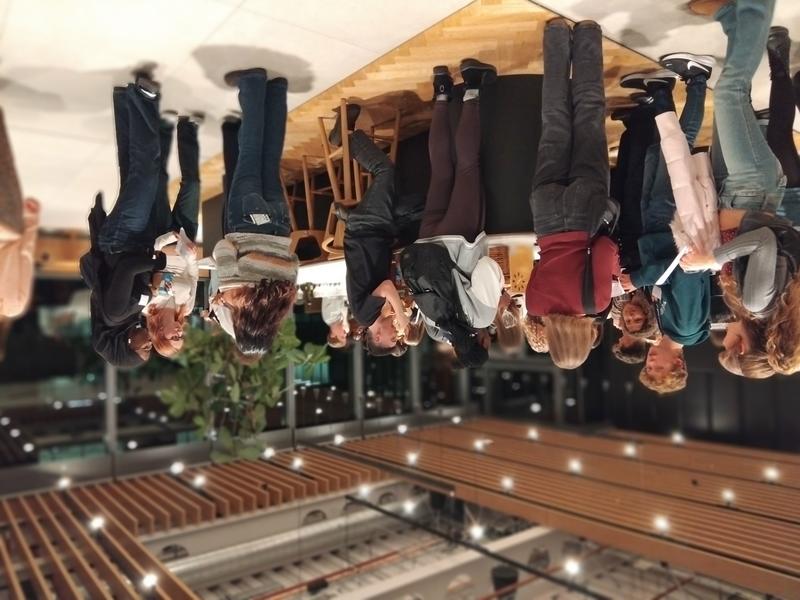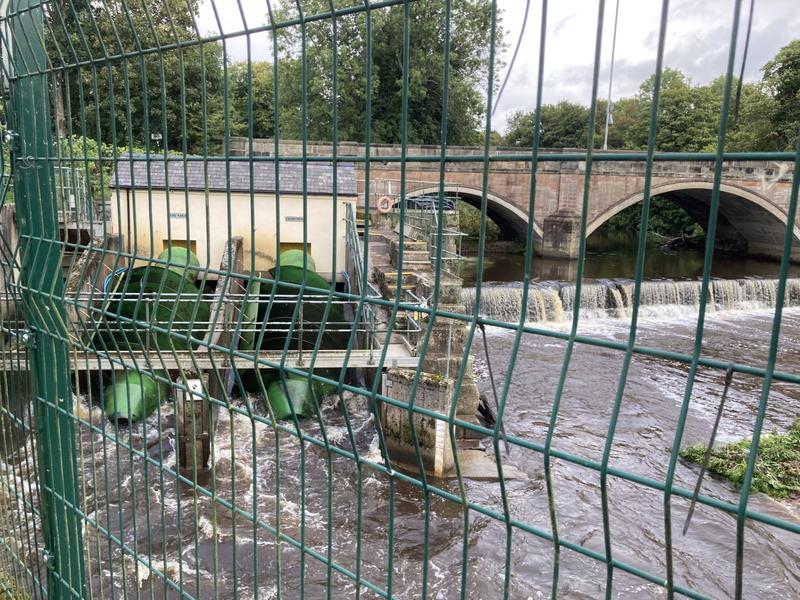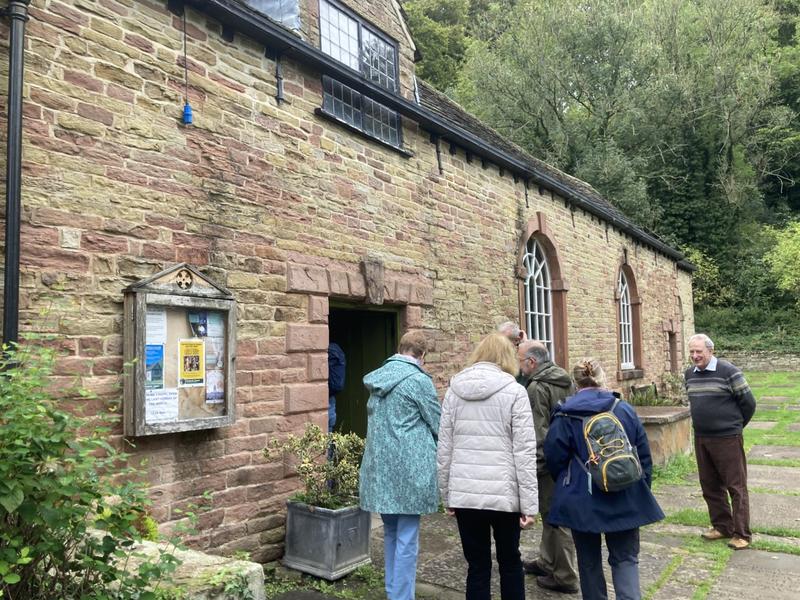Autumn Lecture – November 2025
Our Autumn Lecture was a riveting account of what Ancient Egypt can teach about the links between climate change, health and survival, delivered by Rosalie David OBE, Emerita Professor of Egyptology at the University of Manchester. Prof David, who has been making waves in Egyptology for half a century, outlined research that she and colleagues at Manchester and Cambridge universities have conducted into how global warming during the New Kingdom (c.1569-1081 BCE) changed the plants and animals along the Nile – and how that, in turn, shaped the spread of disease and the remedies that people relied on. The research has implications for the modern day, when climate change may lead to more drug-resistant infections.

The research used biomedical and scientific techniques to examine mummified remains for evidence of how diseases such as schistosomiasis, a tropical disease caused by parasitic worms, developed and how Ancient Egyptians responded. It found that the Egyptians, far from relying on magic as was once imagined, had viable treatments, and that 64% of Egyptian prescriptions had a therapeutic value on a par with drugs in use over the past 50 years. Prof David said the results showed that Egypt had a viable pharmacy 1,800 years before the Greeks.
Informal drinks – October 2025
An informal drinks session was arranged by one of our members in the Northern Quarter in Manchester. The event was open to everyone in the group and it is hoped that this will become a regular feature.
Freshers' event - September 2025
Our annual Freshers’ Meeting attracted a large and enthusiastic audience, with fifty-seven students in attendance from schools and colleges in Greater Manchester and surrounding areas. A panel of eight current undergraduates, representing a wide range of subjects, gave presentations about Oxford life and answered questions. The freshers were keen to ask about balancing work and social activities, the cost of living in Oxford and the availability of financial support, the use of AI, and note-taking and revision strategies. Advice was practical and often humorous, with a recommendation to personalise your college room with items from home balanced by a warning not to overpack as rooms must be cleared for the vacation.
The event was generously hosted at the Manchester Office of Eversheds Sutherland and supported by OUS members including two recent graduates, who were able to add their own experience to the discussion.
Visit to Stockport Hydro and Chadkirk Chapel – September 2025
A party of members and guests enjoyed a fascinating visit to Stockport Hydro, a community-owned hydro-electric project on the River Goyt near Marple, and also to nearby Chadkirk Chapel, a little-known chapel dating from the 16th and 18th centuries, but whose location has probably been a religious site dating back many centuries.
Stockport Hydro, the borough’s first such scheme, began operating at Otterspool Weir in 2012. In an average year its two Archimedes screws – named Thunder and Lightning after a competition among primary schools - generate enough electricity to power about 60 homes. The plant is expected to save 4,000 tonnes of CO2 over its 40-year life. Ben Alexander, chairman, outlined the multiple obstacles that had to be overcome. Now the plant is maintained by a team of almost 50 volunteers.
Chadkirk comprises a Grade II listed chapel, a walled garden and farmland managed as a nature reserve. Described as ‘Stockport’s hidden gem’ – and owned by the borough - it is a place of peace and calm, surrounded by ancient woodland and wildflower meadows, popular for exploring, walking, picnicking and visiting the chapel, which is also used for weddings and community events.
Summer visit to Rochdale Town Hall and Rochdale Pioneers Museum
A party of 34 members and guests enjoyed a tour of Rochdale’s splendid, recently reopened Victorian Town Hall – whose ornate stylings are rivalled only by the Palace of Westminster, according to Historic England - coupled with a visit to Rochdale Pioneers Museum, birthplace of the modern co-operative movement.
A guide explains the town’s crest in the tiling at Rochdale Town Hall
Rochdale Town Hall is a Grade-I listed building designed by William Crossland, opened in 1871 as a symbol of the town’s industrial standing in the textiles trade. It reopened last year after a four-year restoration. Volunteer guides gave us a brilliant account of the Town Hall’s genesis and early years, including fascinating detail such as window decorations devised to stop local urchins from staring into the Mayor’s Parlour. After a buffet lunch in a private room at the Town Hall, we made the short walk to the Pioneers Museum, housed in the building where 28 working men opened a co-operative store in 1844, selling fairly priced, good quality food. We were given a lively account of how hard local shopkeepers and landowners tried to stop them.
May Bank Holiday Walk 2025
A group of 23 members and friends enjoyed our traditional May Bank Holiday walk, this time a 7.25-mile, low-level walk through the picturesque villages of Saddleworth. The weather stayed fine.
Starting from Uppermill, we walked along a bridleway through Greenfield and then back along the Huddersfield Narrow Canal. This canal, linking Ashton-under-Lyne with Huddersfield, opened in 1811 but had taken 17 years to build, encountering serious construction difficulties, notably in building the Standedge Tunnel, the highest, longest and deepest canal tunnel in Britain, which almost bankrupted the project. Celebrated engineer Thomas Telford had to be brought in to advise on how to rescue it.
From a spectacular railway viaduct which carries the TransPennine line over the canal, we walked along a disused railway line, the Delph Donkey, to the village of Delph, where we had lunch at the popular Old Bell Inn, an 18th-century listed coaching house. A final leg after lunch took us back to the viaduct via a woodland path and then back to the bridleway where we had started.
AGM and Informal Dinner February 2025
Our AGM and Dinner took place for a second time at the Stockport Guildhall on 13th February. After a brief and efficient AGM, our members and their guests enjoyed dinner before hearing our speaker. We were very fortunate to be joined by Professor Laura Tunbridge (Queen's, 2003), currently Professor of Music and Henfrey Fellow and Tutor in Music at St. Catherine’s College. From 1st October 2025 she is to be Heather Professor of Music, the senior academic in the Music Faculty and the first woman in this role in its 400-year history.

Our eminent speaker tailored her talk to the occasion and spoke of ‘Beethoven’s life in food and drink’. With illustrations and musical excerpts, she gave us a fascinating overview of Beethoven’s life and times, comparing what he composed with life and events around him. She showed us shopping lists, and conversation books where friends wrote down questions because he could no longer hear. These gave us a real glimpse of the man and in particular his life-long love of coffee. There was then an opportunity for questions before the conclusion of a friendly and fascinating evening. Our thanks for organising this go to our Chairman, John Schultz, who was unfortunately prevented from attending by illness.
YOUNGER ALUMNI GROUP
Several events have taken place for our younger alumni i.e. those who matriculated in the last 20 years. After-work social gatherings continue to be the most popular. Further social events are being planned.
To find out more about our Younger Alumni activities, please email the group's Secretary, giving your contact details, Alumni number, Oxford college, subject and year of matriculation, so that we can add you to our mailing list and keep you informed.












